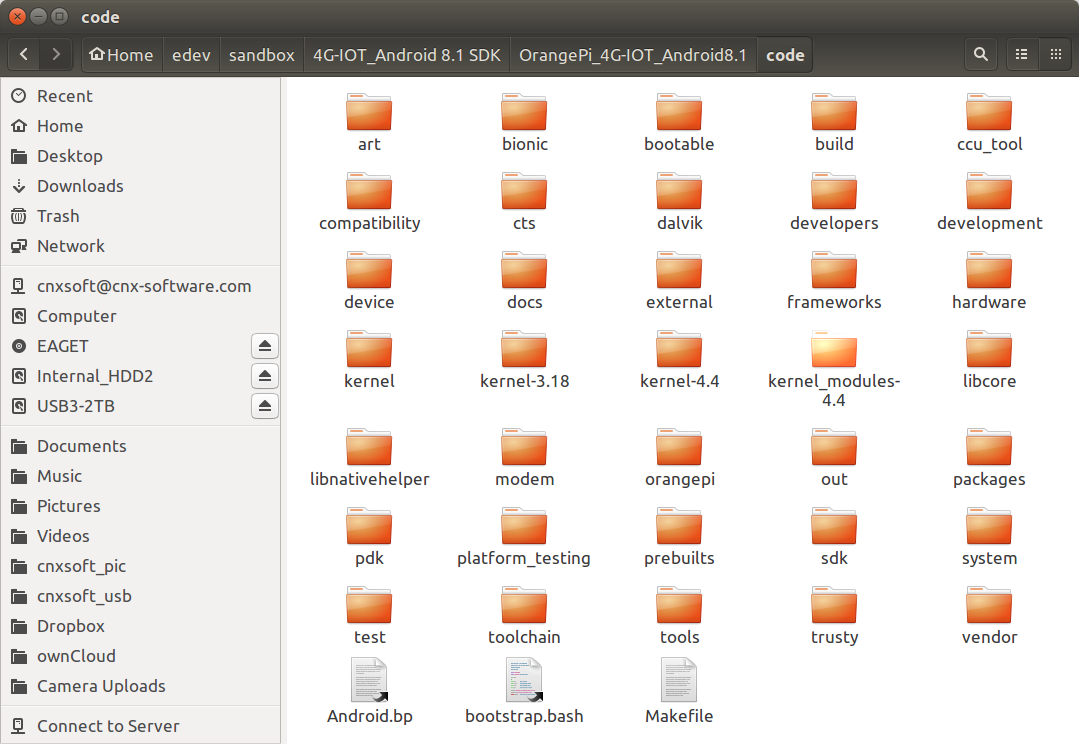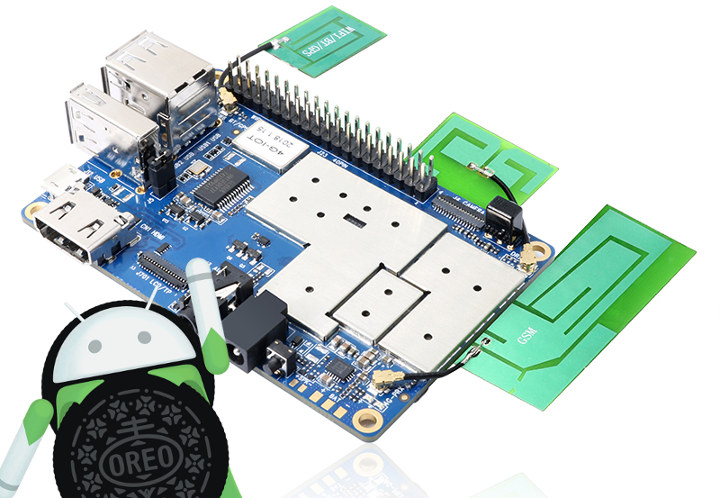When Orange Pi 4G-IoT board launched a few months ago, it shipped with a not so recent Android 6.0 operating system. But the good news is that Shenzhen Xunlong Software has now released Android 8.1 firmware for their Mediatek MT6737M quad core Cortex A53 LTE Cat 4 board, as well as the corresponding SDK.
This makes it the cheapest Android 8.1 board with LTE connectivity available on the market so far as it goes for just under $50.
The SDK is a large tarball (22.6 GB) split into 11 smaller files. It’s hosted on MEGA so download is fairly fast, but due to the size I had to install MEGA Sync software in order to download it easily. Once the download is complete, it’s not recognized in Nautilus, but you can extract the SDK as follows in a terminal:
|
1 2 3 |
cd 4G-IOT_Android 8.1 SDK cat x* > OrangePi_4G-IOT_Android8.1.tar.gz tar xvf OrangePi_4G-IOT_Android8.1.tar.gz |
This will take a while and extract over a million files for a total of 64.8 GB. We can now have a look at the code directory of the SDK to find out a bit more.

Both Linux 3.18 and Linux 4.4 kernels appear to be supported, but since Linux 3.18 is not supported anymore, Linux 4.4 should really be the only option here. The exact version listed in the Makefile is Linux 4.4.95. There’s a orangepi directory with some scripts, and other files inside projects and dct directories. I could not find out exactly what those are. The usual instructions to build Android do not work, so instead we have to follow the instructions in the user manual.
On a related note, there also appears to be a low cost Mediatek MT6737 module on Taobao selling for 119 RMB in quantity ($19), which may be used in your own custom hardware with the Android 8.1 SDK.
Thanks to Jon for the tip.

Jean-Luc started CNX Software in 2010 as a part-time endeavor, before quitting his job as a software engineering manager, and starting to write daily news, and reviews full time later in 2011.
Support CNX Software! Donate via cryptocurrencies, become a Patron on Patreon, or purchase goods on Amazon or Aliexpress





